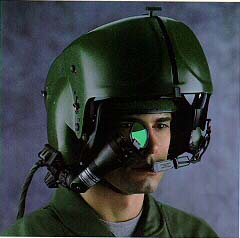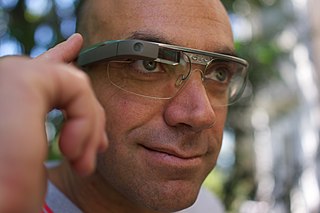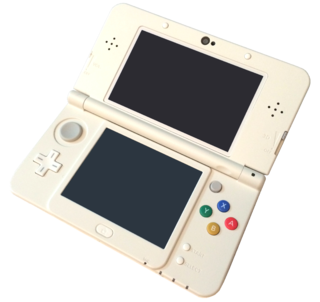Related Research Articles

Virtual reality (VR) is a simulated experience that employs pose tracking and 3D near-eye displays to give the user an immersive feel of a virtual world. Applications of virtual reality include entertainment, education and business. Other distinct types of VR-style technology include augmented reality and mixed reality, sometimes referred to as extended reality or XR, although definitions are currently changing due to the nascence of the industry.

Augmented reality (AR) is an interactive experience that combines the real world and computer-generated content. The content can span multiple sensory modalities, including visual, auditory, haptic, somatosensory and olfactory. AR can be defined as a system that incorporates three basic features: a combination of real and virtual worlds, real-time interaction, and accurate 3D registration of virtual and real objects. The overlaid sensory information can be constructive, or destructive. This experience is seamlessly interwoven with the physical world such that it is perceived as an immersive aspect of the real environment. In this way, augmented reality alters one's ongoing perception of a real-world environment, whereas virtual reality completely replaces the user's real-world environment with a simulated one.

Mixed reality (MR) is a term used to describe the merging of a real-world environment and a computer-generated one. Physical and virtual objects may co-exist in mixed reality environments and interact in real time.

A head-mounted display (HMD) is a display device, worn on the head or as part of a helmet, that has a small display optic in front of one or each eye. An HMD has many uses including gaming, aviation, engineering, and medicine. Virtual reality headsets are HMDs combined with IMUs. There is also an optical head-mounted display (OHMD), which is a wearable display that can reflect projected images and allows a user to see through it.

Pupillary distance (PD), more correctly known as interpupillary distance (IPD) is the distance in millimeters between the centers of each pupil.

Immersion into virtual reality (VR) is a perception of being physically present in a non-physical world. The perception is created by surrounding the user of the VR system in images, sound or other stimuli that provide an engrossing total environment.

Future Vision Technologies (FVT), operating from 1991 to 1995, was part of the second wave of companies working to commercialize virtual reality technology. The company was founded by a team out of the Advanced Digital Systems Laboratory in the department of Electrical and Computer Engineering at the University of Illinois at Urbana-Champaign. The three original members, Matt Klapman, David Frerichs, and Kevin Lee, were later joined by John Belmonte. The company ceased to be an active entity when its PC card business was sold to Fujitsu Microelectronics.

Sensics is an American company making virtual reality products for professionals and consumers. Sensics is the co-founder of the OSVR ecosystem and technical lead of its software platform.

A helmet-mounted display (HMD) is a headworn device that uses displays and optics to project imagery and/or symbology to the eyes. It provides visual information to the user where head protection is required—-most notably in military aircraft. The display-optics assembly can be attached to a helmet or integrated into the design of the helmet. An HMD provides the pilot with situation awareness, an enhanced image of the scene, and in military applications cue weapons systems, to the direction their head is pointing. Applications which allow cuing of weapon systems are referred to as helmet-mounted sight and display (HMSD) or helmet-mounted sights (HMS).
Vuzix is an American multinational technology company headquartered in Rochester, New York. Founded in 1997 by Paul Travers, Vuzix is a supplier of wearable display technology, virtual reality, and augmented reality. Vuzix manufactures and sells computer display devices and software. Vuzix personal display devices are used for mobile and immersive augmented reality applications, such as 3D gaming, manufacturing training, and military tactical equipment. On January 5, 2015, Intel acquired 30% of Vuzix's stock for $24.8 million.
Forth Dimension Displays (ForthDD) is a British optoelectronics company based in Dalgety Bay, Fife, United Kingdom.

An optical head-mounted display (OHMD) is a wearable device that has the capability of reflecting projected images as well as allowing the user to see through it. In some cases, this may qualify as augmented reality (AR) technology. OHMD technology has existed since 1997 in various forms, but despite a number of attempts from industry, has yet to have had major commercial success.

A stereoscopic video game is a video game which uses stereoscopic technologies to create depth perception for the player by any form of stereo display. Such games should not be confused with video games that use 3D game graphics on a mono screen, which give the illusion of depth only by monocular cues but lack binocular depth information.

A peripheral head-mounted display (PHMD) is avisual display mounted to the user's head that is in the peripheral of the user's field of view (FOV) / peripheral vision. Whereby the actual position of the mounting is considered to be irrelevant as long as it does not cover the entire FOV. While a PHMD provide an additional, always-available visual output channel, it does not limit the user performing real world tasks.

A virtual reality headset is a head-mounted device that provides virtual reality for the wearer. VR headsets are widely used with VR video games but they are also used in other applications, including simulators and trainers. VR headsets typically include a stereoscopic display, stereo sound, and sensors like accelerometers and gyroscopes for tracking the pose of the user's head to match the orientation of the virtual camera with the user's eye positions in the real world.

A virtual reality game or VR games is a video game played on virtual reality (VR) hardware. Most VR games are based on player immersion, typically through head-mounted display unit or headset with stereoscopic displays and one or more controllers.

Pimax is a technology company specializing in virtual reality hardware products.
Commercial augmented reality (CAR) describes augmented reality (AR) applications that support various B2B (Business-to-Business) and B2C (Business-to-Consumer) commercial activities, particularly for the retail industry. The use of CAR started in 2010 with virtual dressing rooms for E-commerce.

Vergence-accommodation conflict (VAC), also known as accommodation-vergence conflict, is a visual phenomenon that occurs when the brain receives mismatching cues between vergence and accommodation of the eye. This commonly occurs in virtual reality devices, augmented reality devices, 3D movies, and other types of stereoscopic displays and autostereoscopic displays. The effect can be unpleasant and cause eye strain.
References
- ↑ "Tony Havelka". LinkedIn. 2006-07-11. Retrieved 2013-12-07.
- ↑ "David Collette". LinkedIn. Retrieved 2013-12-07.
- ↑ "Shannon O'Brien – Canada". LinkedIn. Archived from the original on 2013-12-07. Retrieved 2013-12-07.
- ↑ "Liquid Image MRG2.2 Head Mounted Display, HMD, Teardown – Part 1". YouTube. 2010-02-21. Retrieved 2013-12-07.
- ↑ "MRG 2 Head Mounted Display Owner's manual and Reference Guide, Version 1.1" (PDF). Liquid Image. Retrieved 2013-12-07.
- ↑ "Award Winning MRG2 now available for Virtuality System" (Press release). Lioquid Image Corporation. July 4, 1994. Archived from the original on January 14, 2011. Retrieved 2013-12-07.
- ↑ "VR Armour MRG2.2 by Maxim-Lysak on deviantART". Maxim-lysak.deviantart.com. Retrieved 2013-12-07.
- ↑ "Patent US5767820 – Head-mounted visual display apparatus – Google Patents" . Retrieved 2013-12-07.
- ↑ Kevin Jón Johnson (April 14, 1995). "Real Success in Virtual Reality". Lögberg-Heimskringla The Icelandic Weekly. Timarit.is. Retrieved 2013-12-07.
- ↑ Horan, Patrick P. (April 1997). ""The World is What You Make It" - An Application Of Virtual Reality To The Tourism Industry" (PDF). Master's degree thesis, Dublin City University. Retrieved 2013-12-07.
- ↑ "virtual-worlds, ANNOUNCE: Liquid Image Corporation Announces New Division" (Press release). Science-bbs.com. Archived from the original on 2013-12-17. Retrieved 2013-12-07.
- ↑ "voyager99_final_report – Learning Ace – 49". Learning Ace. Retrieved 2013-12-07.[ permanent dead link ]
- ↑ Virtual Reality Systems for Business. Greenwood Publishing. 1995-08-18. ISBN 0899309461.
- ↑ "Line Blurring Between Portable and Wearable Computers". Radio-weblogs.com. 2004-01-14. Retrieved 2013-12-07.
- ↑ "TekGear" . Retrieved 2013-12-07.
- ↑ Training's Future?: Perspectives on Virtual Reality and Related Emerging Technologies (Defense Research Series). Springer. 1997-01-01. ISBN 1489900403.
- ↑ "The Rise and Fall and Rise of Virtual Reality". The Verge. Vox Media.
- ↑ "Evolver". YouTube. 2010-04-08. Retrieved 2013-12-07.